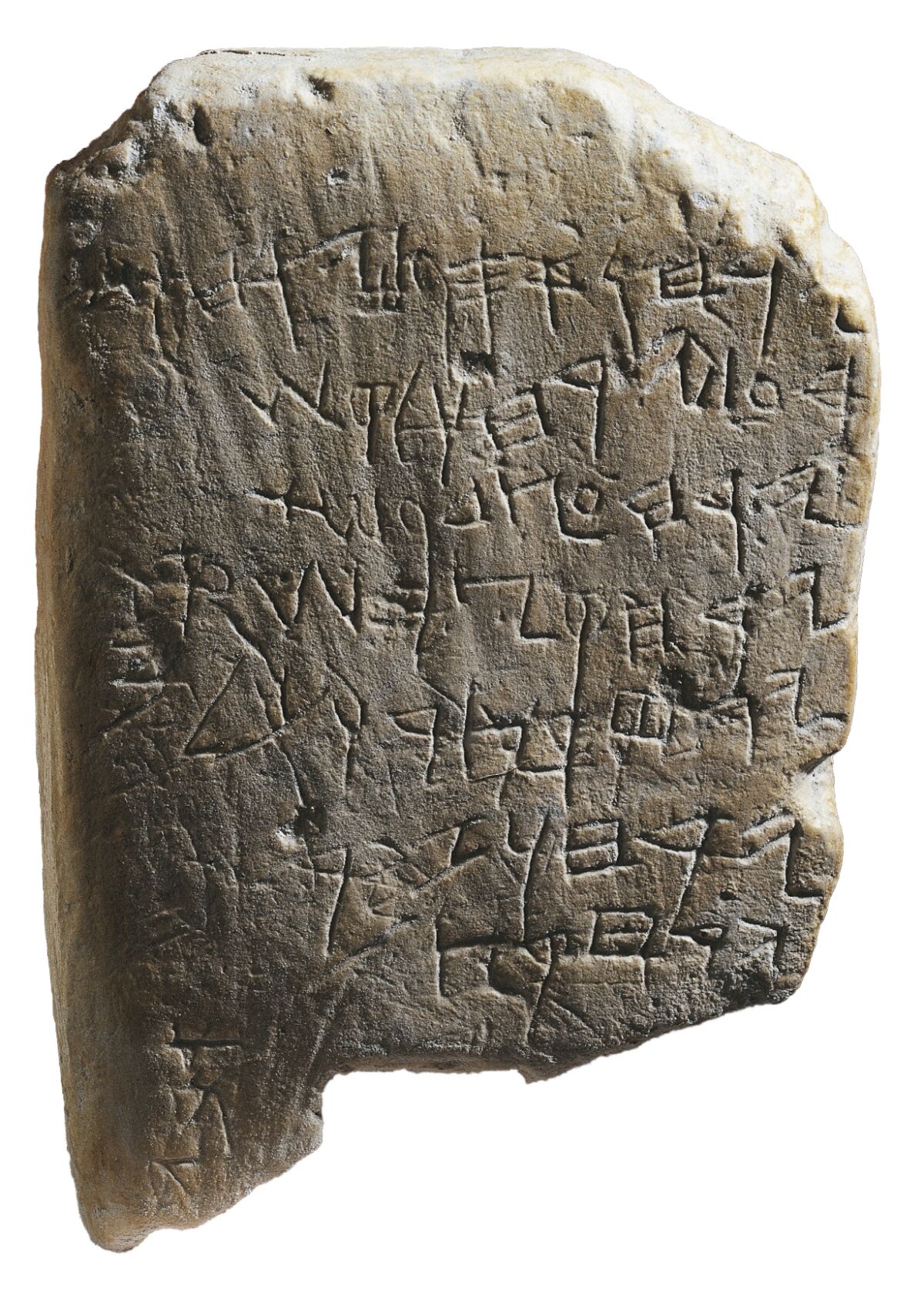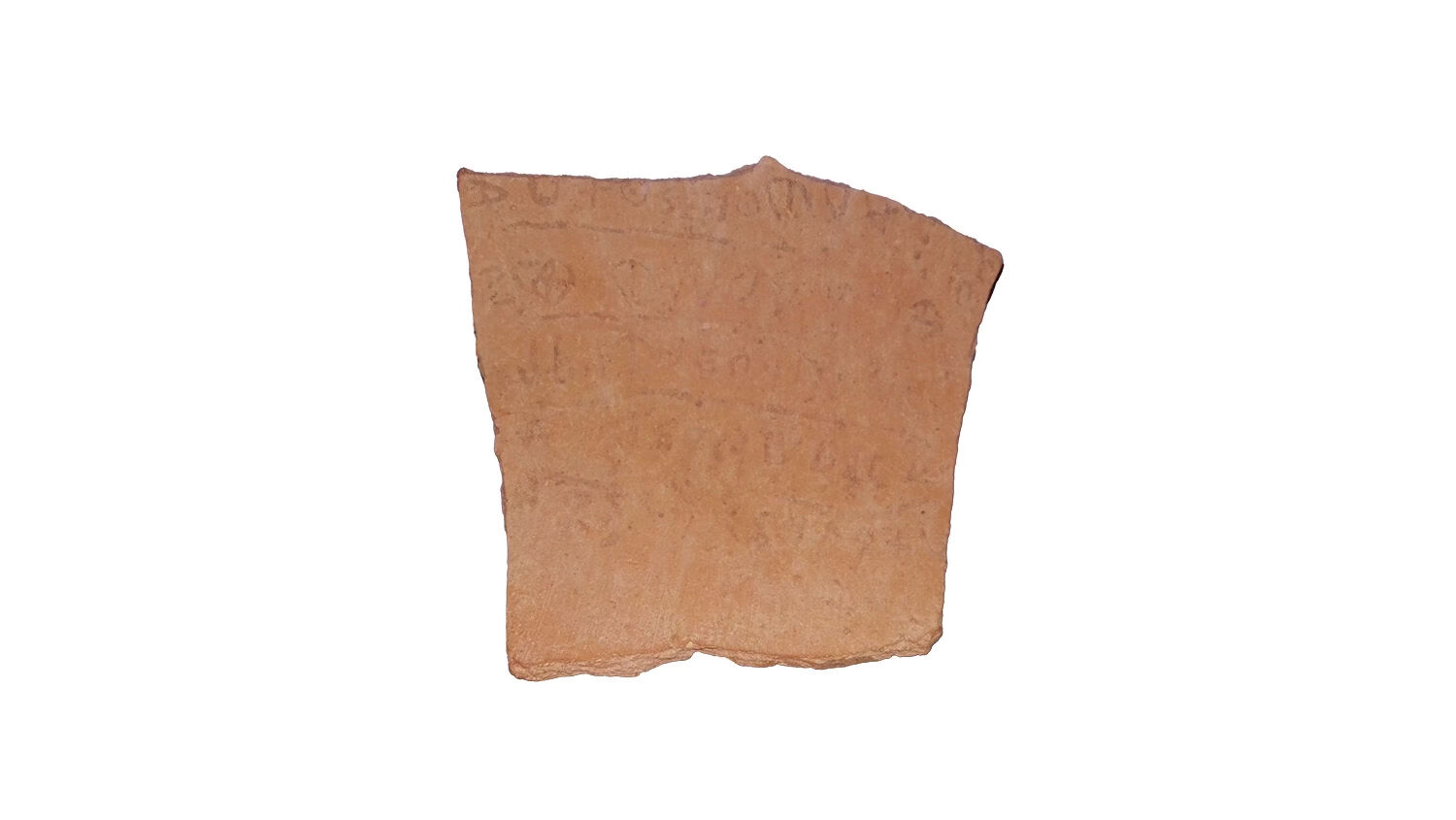One of the primary markers of a competent, large and impressive kingdom is evidence of writing—a degree of literacy, at least on an administrative level. When it comes to literacy in 10th-century Israel, most scholars are skeptical.
Prof. Israel Finkelstein writes in The Bible Unearthed: “Despite the long-standing contention that the opulent Solomonic court was the scene of a flourishing of belles lettres, religious thought and history writing, evidence for widespread literacy is utterly lacking …. Not a single trace of supposed 10th-century Judahite literary activity has been found. Indeed, monumental inscriptions and personal seals—essential signs of a fully developed state—appear in Judah only 200 years after Solomon, in the late eighth century b.c.e.”
This conclusion was highly debatable when it was first published (2001). In the two decades since, it has been entirely disproved. Archaeological evidence—especially from Jerusalem—does point to a renaissance of written activity in the Iron iia period, specifically during the 10th century b.c.e.
Khirbet Qeiyafa Ostracon
Consider some key examples from peripheral areas. The previously mentioned Khirbet Qeiyafa ostracon is an inked potsherd inscription from around 1000 b.c.e., discovered by Prof. Yosef Garfinkel’s team in 2008, in a clear stratigraphic context at the Judahite site. Its early alphabetic text contains 70 preserved letters. According to the researchers, it is the “longest extant inscription from the 12th to ninth centuries b.c.e. in the region” (Debating Khirbet Qeiyafa: A Fortified City in Judah from the Time of David).
The weathered, 3,000-year-old ostracon is incomplete and difficult to properly translate. French epigrapher Émile Puech proposes the following reconstruction:

Do not oppress, and serve God … despoiled him/her
The judge and the widow wept; he had the power
Over the resident alien and the child, he eliminated them together
The men and chiefs have established a king
He marked 60 [?] servants among the communities/habitations/generation.
This reading is strikingly similar to the biblical record of King Saul’s appointment (1 Samuel 8:11-19). A thorough study of the language of the inscription published in Debating Khirbet Qeiyafa led scholars to believe the “most probable identification of the language of the inscription is still Hebrew” (2016).
Gezer Calendar
Another example comes from 30 kilometers (20 miles) west of Jerusalem, from the Solomonic site of Gezer. Known as the “Gezer Calendar,” this item was discovered in 1908 during the excavations of R. A. S. Macalister. This small engraved limestone inscription, dated to the 10th century b.c.e., reads:
Two months harvesting [September, October]
Two months sowing [November, December]
Two months late planting [January, February]
One month cutting flax [March]
One month reaping barley [April]
One month reaping and measuring [May]
Two months pruning [June, July]
One month summer (fruit) [August]
Abijah [name of the scribe]

This calendar clearly records the seasons for sowing and harvesting various crops. It is notable for several reasons beyond its 10th-century dating.
It starts from the seventh month in the sacred calendar (Leviticus 23). This seventh month (Ethanim/Tishri) was actually reckoned as the first month in the civil calendar (as it continues to be to this day in Israel). The fact that this agricultural calendar begins here makes further sense, because the Bible reveals that the agricultural, land sabbath and jubilee years were anchored to this seventh month in the religious calendar (i.e. Exodus 23:16; 34:22; Leviticus 25; Deuteronomy 15). From the two months of gathering beginning the agricultural year, the calendar continues through all 12 months.
One of the most interesting features on the Gezer calendar is the signature at the bottom: Abijah. The name “Abijah” is mentioned 20 times in the Bible; of these, the vast majority (16) refer to individuals who lived in the 10th century. Evidently, this was a common name for the period.
One prevailing theory about the nature of this inscription is that it may have constituted a child’s writing exercise—hence the repetitive, mundane nature of the text and the use of a soft, easily erasable limestone.
Jerusalem Inscriptions
Inscriptions from surrounding locations are one thing. Most crucial, however, are inscriptions from the capital—in this case, the united monarchy’s Jerusalem.
The aforementioned 10th-century Ophel Pithos Inscription is a key example of the presence of writing in Jerusalem. This fragmentary Ancient South Arabian text points to not only the presence of writing in Jerusalem, but also long-distance trade and the use of foreign language/writing systems—necessitating the presence of, not only a literate Jerusalem administration, but also one able to facilitate such international and foreign communication.
Another example of early writing in Jerusalem is a bronze pym weight, discovered in the topsoil of the Temple Mount and published in 1903 by George Barton. The weight contains a three-register, 13-letter inscription: “Pym belonging to Zachariah, [son of] Yair.” It was dated paleographically by Dr. Gabriel Barkay to somewhere within the 10th to ninth century b.c.e.
There are several such inscribed items from Jerusalem that date to the 10th and ninth centuries b.c.e.—a significant amount when compared to other sites (as highlighted by Prof. Christopher Rollston in his 2017 article “Epigraphic Evidence From Jerusalem and Its Environs at the Dawn of Biblical History: Methodologies and a Long Durèe Perspective”). But what about the above charge in The Bible Unearthed—that the key “missing” administrative item in the Jerusalem inventory, not seen until 200 years after Solomon, is personal seals?
Papyri—a primary writing medium in the ancient world—do not survive the moist Levantine climate (outside of caves in the Dead Sea region). But what about the mainly clay seals that stamped such documents?
It is true that from the eighth century, in Jerusalem and elsewhere, a flush of epigraphic seals and seal stamps begin to emerge—personal seals, and their clay bullae impressions, used to seal papyrus documents. (These seals generally bear something akin to the formula, “Belonging to … son of ….”) We do have a small handful of epigraphic seals dated to the ninth century from Jerusalem. But what about the 10th century?
Centering the debate about literacy and administration on epigraphic seals and seal impressions is at best deeply disingenuous. Why? Because we have an abundance of seals—dating to the 10th century b.c.e.—that are primarily iconographic in nature.

Bring Out the Iconographic Seals!
While an iconographic seal is one bearing images and an epigraphic seal is one bearing text, they still serve the same function. Although the use of epigraphic seals only really came into practice during the eighth century b.c.e., this does not mean the practice of sealing documents was nonexistent, or even diminished, during prior centuries. Quite the contrary. Prior to the eighth century, administrative documents were circulating within Jerusalem to a significant degree—but during the Iron iia period, they were stamped with iconographic seals.
This is aptly demonstrated in Othmar Keel’s Corpus der Stempelsiegel-Amulette aus Palästina/Israel, Katalog Band V (2017). His corpus contains 65 such “glyptic” seals that have been found in Jerusalem over the decades, dated between the mid-11th and eighth centuries b.c.e. The majority of these are attributed to the 10th and ninth centuries. Actually, for this earlier period of First Temple Period Jerusalem, we have a significantly higher quantity of iconographic seals than we do epigraphic seals from the latter.
It is a similar story with the seal impressions—the bullae. Keel documents 176 bullae from this equivalent period that have been discovered in Jerusalem. Likewise, the majority are from the 10th to ninth century b.c.e. And again, in this case, we have more iconographic bullae from the earlier half of Jerusalem’s history than we do epigraphic bullae from the latter.
Even more consequential are the reverse impressions on these early bullae. It is unfortunate that in much of Keel’s corpus, impressions on the reverse side are either unidentifiable (due to damage) or otherwise not stated. Yet for those that are, the majority of these early bullae contain papyrus impressions (47 in total). This shows that a significant quantity of written documents were circulated among a literate Jerusalemite administration during the very earliest period of the capital city.
During the era of David and Solomon, then, stamps were clearly in circulation and items were stamped with arguably no less fury than during the later years of Jerusalemite development and administration.
It is evident that sometime during the eighth century b.c.e. there was a change in Judahite administrative method—switching from largely iconographic seals to epigraphic. Whether this was a religious decision, a political one or otherwise is unknown, but it certainly was not one based on literacy or administrative strength.
One could compare this with our modern age. Many, if not most, of our seals, signet rings, etc are motif-based—family crests, symbols, designs—not the type of bland text found on many later, Iron iib seals and bullae. Does that make us any less literate or administratively destitute?

